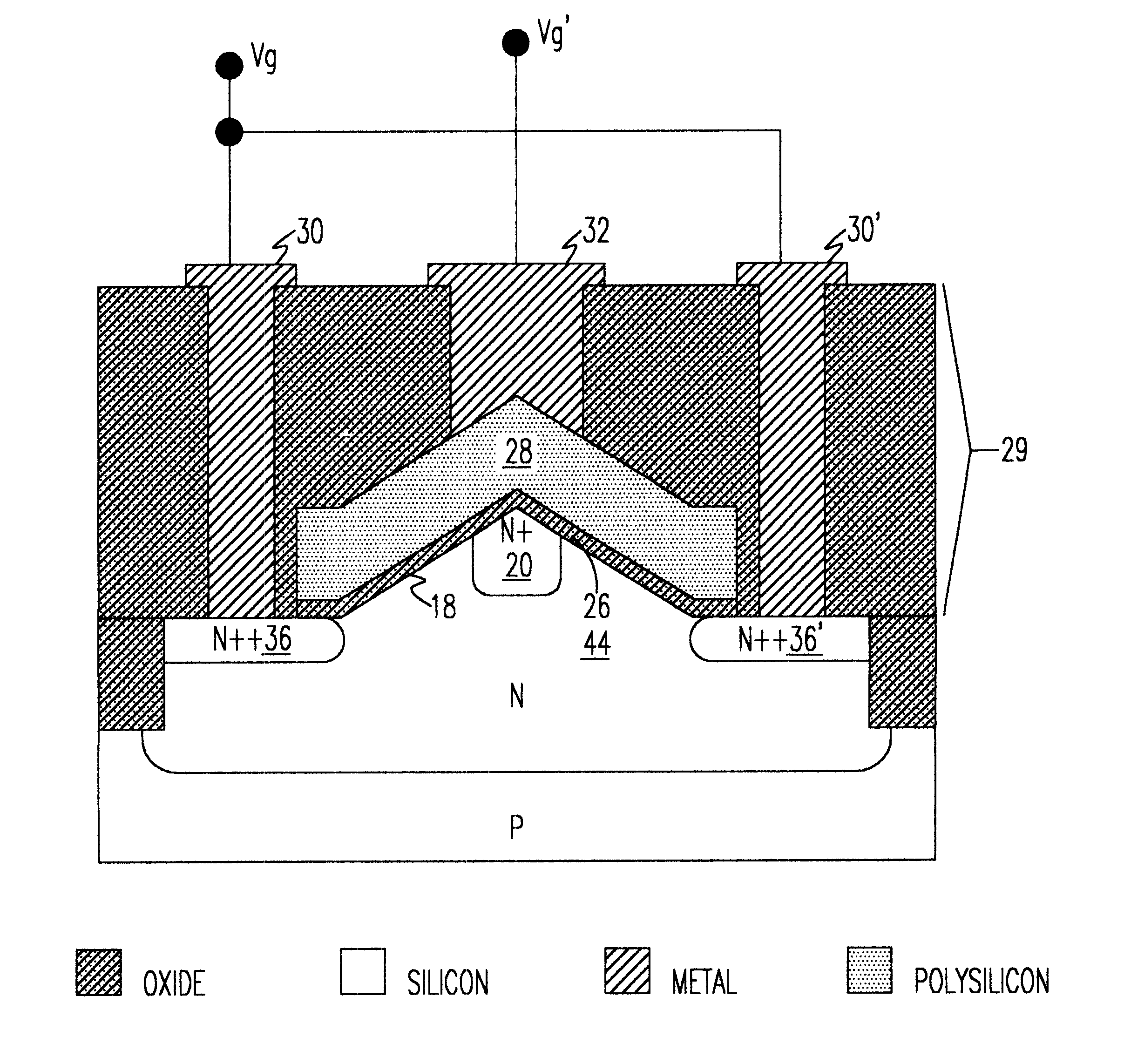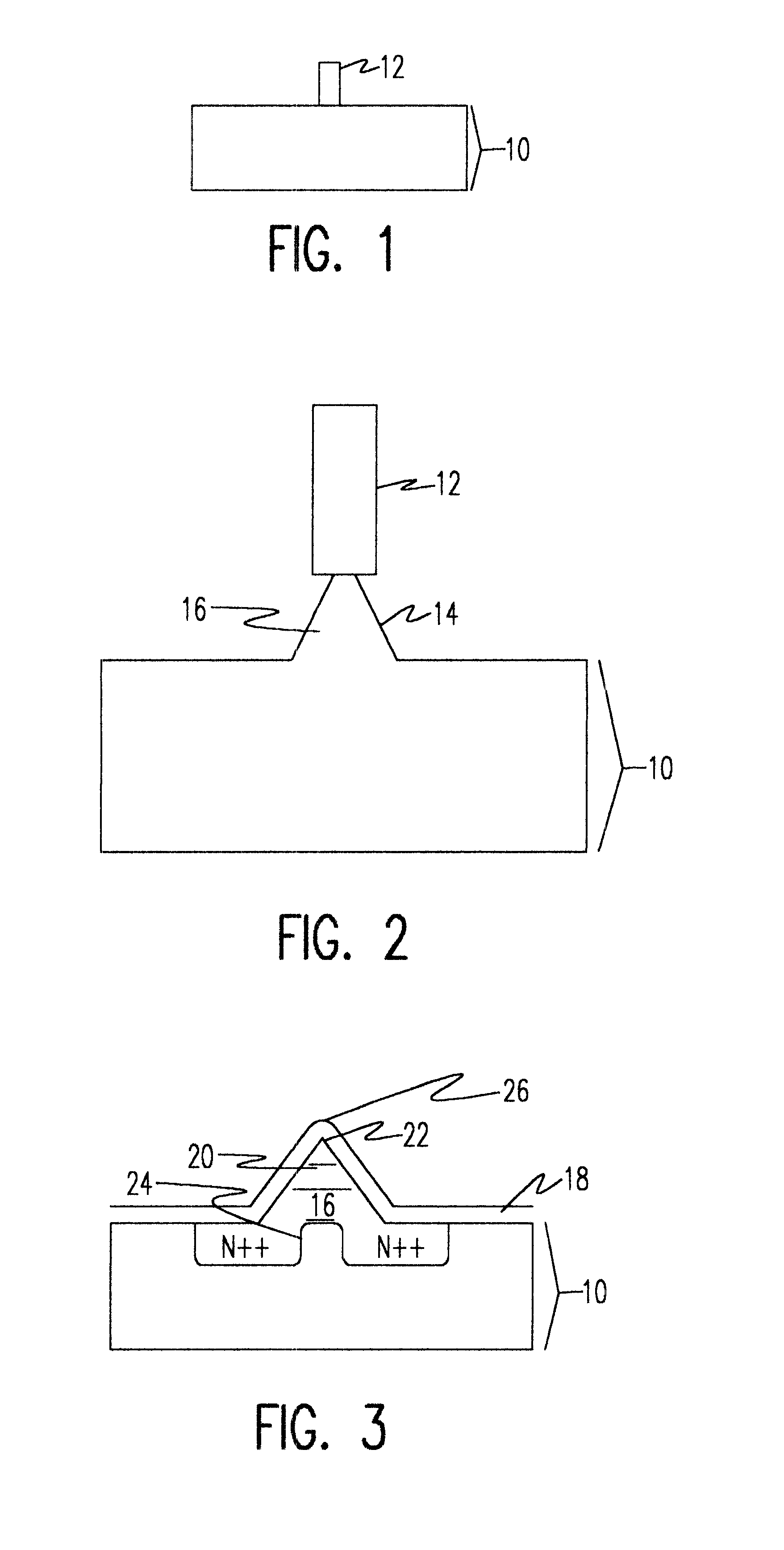Silicon anti-fuse structures, bulk and silicon on insulator fabrication methods and application
a technology of silicon and insulator, applied in the direction of semiconductor devices, semiconductor/solid-state device details, electrical devices, etc., can solve the problems of cost and complicated process
- Summary
- Abstract
- Description
- Claims
- Application Information
AI Technical Summary
Problems solved by technology
Method used
Image
Examples
Embodiment Construction
As shown in FIG. 1, a wafer 10 has a mask 12 placed over a portion of the wafer 10. The mask 12 is placed over an area that will eventually form a silicon tip. The mask material may be any suitable material such as, for example, a 20-60 nm nitride. Alternate means of creating a sub-lithographic mask are also feasible, thereby reducing the pitch (i.e., the tip plus space distance) and maximizing tip placement. One such means of producing a sub-lithographic image is shown in FIGS. 1A, 1B and 1C. In FIG. 1A, a mask 12 is used to pattern an oxide material 11, exposing one sidewall 15 for every tip 17 shown in FIG. 1C. In FIG. 1B, a spacer 13, preferably a nitride, is patterned to a sub-lithographic size. Oxide 11 and nitride 13 are chosen such that the etch rate of the oxide 11 is at least 100 times the etch rate of nitride 13. Upon selectively etching the oxide 11, the sub-lithographic mask of the nitride 13 is left, as shown as 17 in FIG. 1C, each of which corresponds to mask 12 show...
PUM
 Login to View More
Login to View More Abstract
Description
Claims
Application Information
 Login to View More
Login to View More - R&D
- Intellectual Property
- Life Sciences
- Materials
- Tech Scout
- Unparalleled Data Quality
- Higher Quality Content
- 60% Fewer Hallucinations
Browse by: Latest US Patents, China's latest patents, Technical Efficacy Thesaurus, Application Domain, Technology Topic, Popular Technical Reports.
© 2025 PatSnap. All rights reserved.Legal|Privacy policy|Modern Slavery Act Transparency Statement|Sitemap|About US| Contact US: help@patsnap.com



